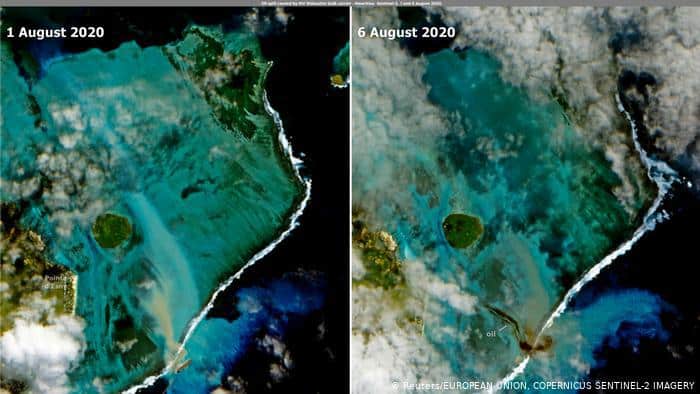

German Chancellor Angela Merkel and German ESA astronaut Alexander Gerst stand at the Orion spacecraft during a visit at the training unit of the Columbus space laboratory at the European Astronaut training centre of the European Space Agency ESA in Cologne, Germany on May 18, 2016. Ina Fassbender / Anadolu Agency / Getty Images
By Monir Ghaedi
As the COVID-19 pandemic continues to keep most of Europe on pause, the EU aims for a breakthrough in its space program. The continent is seeking more than just a self-sufficient space industry competitive with China and the U.S.; the industry must also fit into the European Green Deal.
‘Strategic Autonomy’ in Space
“I believe we need a more offensive and aggressive strategy,” said the European Commissioner Thierry Breton as he laid out the main priorities for the EU space program over the next seven years. Breton said that the European Union must move quickly to reduce its dependence on third countries.
"Enhancing Europe's strategic autonomy in space is not an option" @ThierryBreton #BBESpaceConf pic.twitter.com/Qm9gOeUh4v
— Business Bridge Europe (@BBE_Europe) January 12, 2021
“Strategic autonomy” is Brussels’s latest catchphrase that echoed throughout Breton’s and other EU officials’ speeches during the 13th European Space Conference earlier this week. As Europe plans to address economic needs within its borders, its aerospace program is set to focus inwards as well.
Breton mentioned having independent EU-wide internet coverage as another important target. Noting that “attacks on the internet are not fiction anymore,” Breton explained that the EU must construct a secure broadband network.
He also emphasized that the European Commission needs to promote entrepreneurship and innovation in space, while continuing to expand its existing projects. Otherwise, he said, Galileo and Copernicus – Europe’s major satellite projects – will soon become obsolete.
After these plans receive approval from European governments and the European Parliament, €15 billion (.2 billion) will fund space sector projects during the 2021-2027 period, in addition to current funding from national governments and private investments.
Meeting the Competition and Climate Goals
During the past decade, the number of satellite launches and space missions has surged internationally. China’s lunar rover landed on the far side of the moon. Private companies in the U.S. have made rapid advancements too. SpaceX successfully returned two of its reusable rocket cores to Earth.
As vital infrastructure like transportation and communications rely more and more on space technology, there’s a greater sense of urgency for the EU to realize its own space ambitions.
The continent’s other pressing objective is to become carbon neutral by 2050. Expansion of EU aerospace activities – now heavily dependent on the production of metal and fuel – must comply with the European Green Deal.
Alignment of these two goals might not be straightforward, but in the view of EU officials, the space program has a role to play in fighting climate change, fostering green technologies like clean fuels and optimized farming. Additionally, data and services from space are used to constantly monitor the Earth and measure things like CO2 levels.
EU officials and entrepreneurs mentioned clean fuel production and satellite monitoring missions as two promising areas to help achieve Europe’s Green Deal and other environmental targets.
Clean Energy in Space and on Earth
One of the areas in which European space companies have a leg up is the production of liquid hydrogen as fuel. When liquid hydrogen burns, it produces enough propelling force to launch a rocket, but emits only water vapor and warm air. However, it’s highly energy-intensive to produce, creating a large carbon footprint. The focus of European firms working on this energy option is to mitigate the impact of liquid hydrogen production on the environment.
“Hydrogen (as fuel) is expensive today but tomorrow it will be cheap and green,” said Xavier Vigor, vice president of Air Liquide, a supplier of industrial gases.
European rockets have used liquid hydrogen as their fuel for decades. ArianeGroupe, the continent’s largest launcher company, aims to launch its carbon-neutral rockets running on hydrogen produced from biomass by 2030. The company also plans to bring the clean fuel to the transport industry. If they succeed, ships and airplanes will be able to travel around the globe, producing no carbon emissions.
“I am really thankful for the decisionmakers in Europe who made the decision to use hydrogen for European launchers. This was a brilliant bet,” said Jean-Christophe Henoux, ArianeGroup’s vice president of Future Programmes.
Satellites Monitoring Climate Change
EU officials are confident their satellite program will also help in the fight against climate change. The EU space program will continue to design missions focused on CO2 monitoring and a polar observation by its satellites.
“Satellite programs such as Galileo and Agnus have already had an important contribution to minimizing our environmental footprint,” said Rodrigo da Costa, the head of the European Global Navigation Satellite Systems Agency (GSA), in a press briefing.
Copernicus, the EU’s Earth observation system, has monitored climate change since 2017, providing historical data and climate models for the future.

European satellites continue to provide data on climate change.
“We believe we can create synergies between navigation and Earth observation,” said da Costa. Better navigation helps shorten transportation routes, which cuts fuel consumption. This is how EU satellite programs can contribute to the implementation of the Green Deal, according to da Costa.
Full details of the European space plan have yet to be worked out. The European Commission will meet to decide on them in the coming weeks. After that, a consortium of aerospace and telecom companies will start working to operationalize the plan.
Reposted with permission from DW.

 233k
233k  41k
41k  Subscribe
Subscribe 